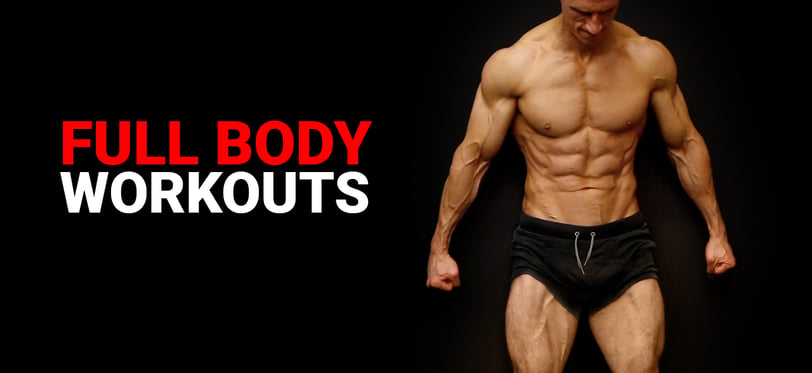What Is the Best Full Body Strength Training Routine for Beginners? A Step-by-Step 2024 Guide
Unlock the secrets of progressive overload for beginners. Explore safe, science-backed methods to build strength effectively in 2024. Start your journey today!
FITNESS
3/10/20254 min read


Full Body Strength Training Routine for Beginners
Embarking on a fitness journey can be both exciting and intimidating, especially when it comes to strength training. As a beginner, you may feel overwhelmed by the variety of exercises, equipment, and techniques out there. Trust me, I’ve been there too. In this guide, we’ll walk through an effective full-body strength training routine tailored specifically for beginners. By the end, you’ll feel confident, empowered, and ready to conquer your fitness goals.
Why Strength Training is Important
Strength training isn’t just about building muscle; it’s about enhancing your overall health and functionality. Incorporating strength training into your routine can:
Improve bone density and joint health.
Boost your metabolism, helping you burn calories even at rest.
Increase muscle strength, making everyday activities easier.
Enhance mental health by reducing stress and boosting confidence.
When I first started strength training, I noticed improvements in my posture and energy levels within weeks. Tasks that once felt exhausting—like carrying groceries or climbing stairs—became effortless.
Getting Started: Essentials for Beginners
Before diving into the routine, let’s cover a few essentials:
1. Warm-Up
Always begin with a 5-10 minute warm-up to prepare your muscles and reduce the risk of injury. Try light cardio like walking, cycling, or jumping jacks.
2. Gear Up
You don’t need a gym membership or fancy equipment to get started. Here are some beginner-friendly essentials:
Adjustable Dumbbells: Great for versatility. Check out these affordable adjustable dumbbells on Amazon.
Resistance Bands: Perfect for low-impact strength training. Grab a set of resistance bands here.
Yoga Mat: For added comfort during floor exercises. This highly-rated yoga mat is a great option.
The Full-Body Strength Training Routine
This routine targets all major muscle groups: upper body, lower body, and core. Perform it 2-3 times a week, leaving a day of rest between sessions.
1. Squats (Lower Body)
Muscles Worked: Quads, glutes, hamstrings
How to Do It: Stand with feet shoulder-width apart. Lower your hips back and down as if sitting on a chair. Push through your heels to return to standing.
Reps: 3 sets of 12-15 reps
Tip: Struggling with balance? Hold onto a chair or use a wall for support.
When I first started squats, I could barely manage bodyweight squats. Over time, I added light dumbbells and noticed a huge difference in my leg strength.
2. Push-Ups (Upper Body)
Muscles Worked: Chest, shoulders, triceps, core
How to Do It: Begin in a plank position. Lower your chest toward the floor, keeping your body straight. Push back up to the starting position.
Reps: 3 sets of 8-12 reps
Modification: Perform push-ups on your knees if the standard version is too challenging.
3. Bent-Over Rows (Upper Body)
Muscles Worked: Back, biceps
How to Do It: Hold a dumbbell in each hand, bend your knees slightly, and hinge forward at the hips. Pull the dumbbells toward your waist, squeezing your shoulder blades together. Lower back down.
Reps: 3 sets of 10-12 reps
Equipment Recommendation: Adjustable dumbbells make this exercise more effective.
4. Plank (Core)
Muscles Worked: Core, shoulders, back
How to Do It: Get into a push-up position, keeping your body straight from head to heels. Hold this position.
Duration: 3 sets of 20-30 seconds
Challenge: Gradually increase your hold time as your core strength improves.
5. Deadlifts (Lower Body)
Muscles Worked: Glutes, hamstrings, lower back
How to Do It: Hold dumbbells in front of your thighs. Hinge at your hips and lower the dumbbells down your legs. Keep your back straight and push through your heels to return to standing.
Reps: 3 sets of 10-12 reps
Cool Down and Stretch
Always finish your workout with a cool-down to help your body recover. Spend 5-10 minutes stretching the muscles you worked. My favourites include hamstring stretches, cat-cow stretches, and shoulder rolls.
Common Beginner Mistakes (And How to Avoid Them)
Skipping Warm-Ups: Neglecting warm-ups increases the risk of injury. Even a few minutes of light activity can make a difference.
Using Too Much Weight: Start light and focus on form. You can always increase the weight as you gain strength.
Inconsistent Routine: Consistency is key. Aim for at least two sessions per week.
Neglecting Rest Days: Your muscles need time to recover and grow. Ensure you’re taking at least one day off between strength sessions.
Staying Motivated
Staying consistent can be tough, especially in the beginning. Here’s what worked for me:
Track Your Progress: Keep a fitness journal to log your exercises, weights, and reps.
Find a Workout Buddy: Sharing your journey with a friend makes it more enjoyable and keeps you accountable.
Celebrate Small Wins: Whether it’s adding extra reps or lifting a heavier weight, every milestone deserves recognition.
I still remember the first time I successfully held a plank for 60 seconds. It felt like a huge victory and motivated me to keep going.
Recommended Supplements and Gear
Protein Powder: A convenient way to meet your protein needs. Try this beginner-friendly protein powder.
Workout Gloves: Protect your hands during lifting. These gloves are comfortable and durable.
Foam Roller: Great for post-workout recovery. This foam roller is a lifesaver.
Final Thoughts
Starting a strength training routine can feel overwhelming, but remember, every expert was once a beginner. Focus on consistency, listen to your body, and celebrate your progress along the way. With this routine, you’ll not only build strength but also gain confidence and a sense of accomplishment.
Are you ready to take the first step toward a stronger, healthier you? Let me know how your journey unfolds in the comments below. And don’t forget to check out the recommended gear and supplements to set yourself up for success!




